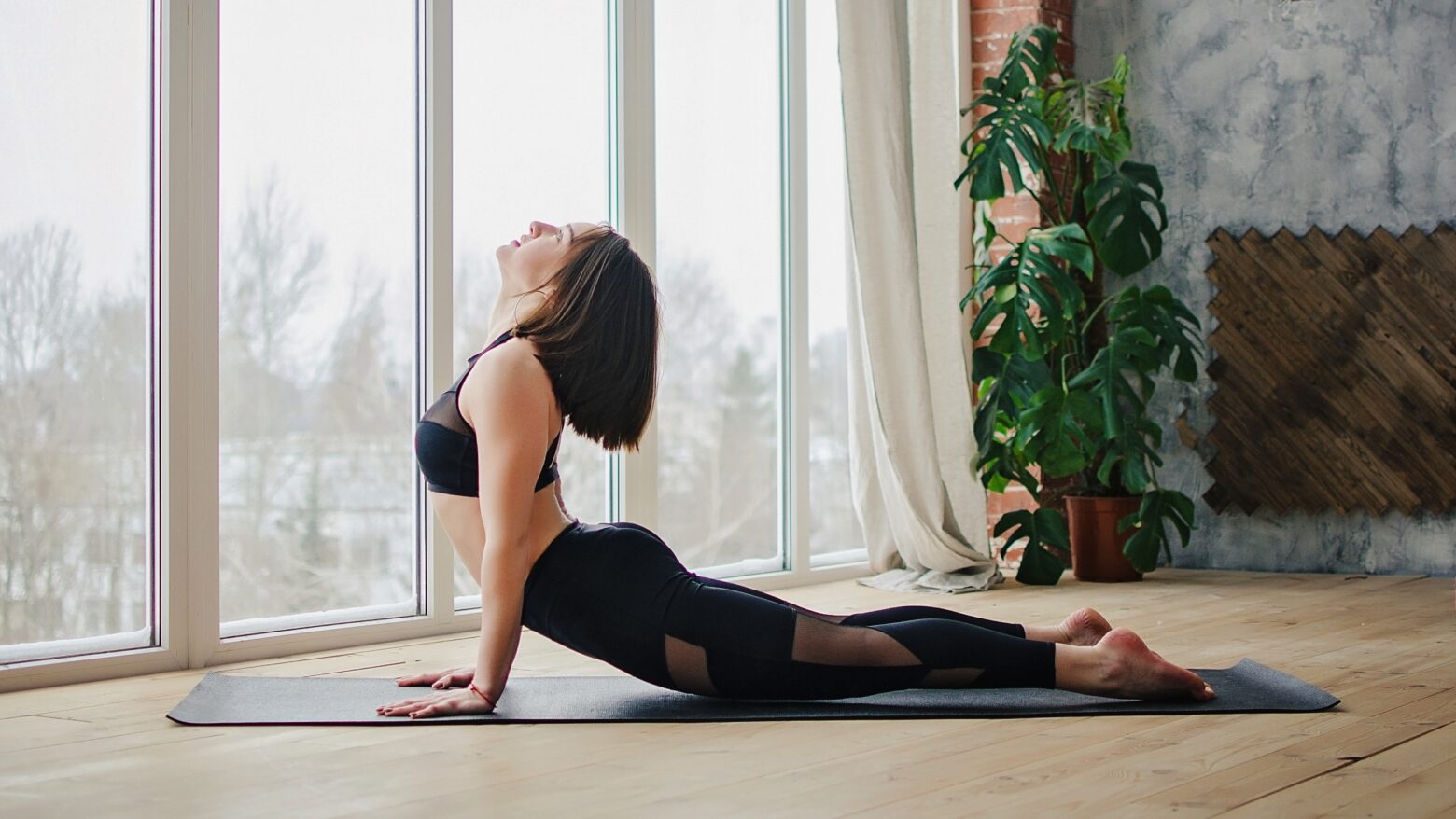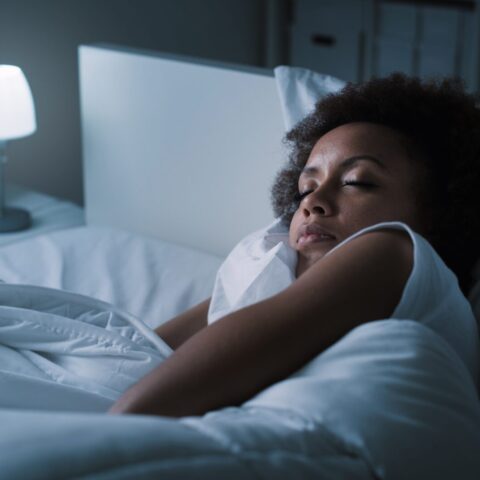Restorative Yoga Sequence to Help You Sleep Better

Why is restorative yoga such a perfect complement to a Paleo lifestyle? The reasons are wide-ranging and inspiring:
- It’s fantastic for joint health
- It supports good digestion
- It encourages mindfulness of body and breath
- It improves the quality of sleep
- It enhances overall health and wellness – yeah!
In this post we’ll highlight some restorative yoga poses that are especially effective for creating deep and nourishing sleep. They’re great to do after an invigorating day of hiking, biking, when you’ve spent a bit too much time in front of a computer, or any time you want to improve the quality of your sleep.
These positions are drawn largely from the Kaiut Yoga tradition, which specializes in deeply restorative and therapeutic yoga sequences. Doing them in the order they’re presented here is beneficial—though it’s also fine to choose just one or two if you prefer.
Supported Table Pose
For this pose, you’ll need a small pillow or folded blanket, and a sturdy desk or table.
Clear off a section of the desk or table and place the pillow or blanket on the edge nearest to your body. Now place your hands, palms facing downward, near the center of the desk/table.
Next, step your feet back and rest your forehead on the pillow/blanket, with your arms extending forward along the desk/table, your spine parallel to the floor, and your hips directly above your feet. Your back should now be an extension of the tabletop (or desktop), with your forehead resting comfortably on the pillow (or folded blanket).
Reach forward through your fingers and at the same time draw your hips in the opposite direction (away from the table). Feel how these two movements together naturally lengthen your spine.
Remain in this position for a couple of minutes, relaxing your head and neck completely while becoming aware of the movement of your breath – how the inhalations and exhalations feel in your body.
Reclined Hands-Behind-Head Pose
For this pose you’ll need to lie down on the floor, facing upward. Hinge your knees so that the soles of your feet are flat on the floor, about hip-width apart.
Now interlace your fingers behind your head (or put them at your side) and allow your elbows to relax toward the floor. Your elbows may release naturally all the way to the floor or they may float a bit above the floor. Either way is fine.
Remaining in this position, gently close your eyes and once again bring your attention to the movement of your breath. Become aware of the sensations in your body, particularly in your upper chest, back, and shoulders.
Remain in the pose for a couple of minutes, then release your hands and gently roll to the side.
Legs-Up-the-Wall Pose
The Legs-Up-the-Wall Pose (aka Viparita Karani) offers many benefits on its own or as part of a series. It’s a great one to do any time your legs could use a bit of rest and rejuvenation: You can even do it in the middle of a forest hike, using a tree trunk instead of a wall. But here we’ll assume you’re indoors and using a wall.
Sit on the floor, close to a wall. Now release your torso downward and swing your legs up onto the wall. Try to have the base of your pelvis 4-6 inches away from the wall, so your legs are at an angle, with just the heels of your feet in contact with the wall.
Place your hands wherever they’re most comfortable – resting near your hips, with your hands on your belly, or with your hands interlaced behind your head (as in the previous pose).
Reach up gently through your heels to fully extend your legs. Allow your eyes to gently close and welcome whatever physical sensations you become aware of.
Remain in this pose for three to five minutes or longer if you’d like. To come out of the pose, hinge your knees to slide your feet down the wall and then roll onto your side.
Calming-The-Senses Pose
This pose provides an opportunity to calm and soothe your sensory organs. Though it can be done at any time during the day, it’s especially wonderful right before bed. Here’s how:
Sit cross-legged or lie down on your bed, facing upward. If you wear glasses, take them off.
Rub the palms of your hands together for a few seconds, to generate warmth. Then place your cupped hands over your eyes so that the palms are forming domes over your closed eyes, with the edges of your hands firmly against the skin around the eyes. Remain in this position for one to two minutes, enjoying the relaxation of your eyes and forehead.
Now do the same thing with your ears. Rub the palms of your hands together to generate warmth and then cup your hands over your ears. With your eyes closed and your hands cupping your ears, enjoy the sound of your breath. Remain like this for one to two minutes.
Savasana: Corpse Pose
This final pose in our sequence, called Savasana (aka Corpse Pose), can be done lying down on the floor or – if you’re preparing to go to sleep immediately afterward – right in your bed. In either case, lie down on your back, facing upward.
Extend your legs fully, and allow your arms to rest near your sides, wherever they’re most comfortable. Take a few deep, slow breaths, saying “ahh” as you relax the muscle of your face, neck, and jaw completely. Smile gently as though you just got a joke that someone told you earlier in the day.
Allow your entire body to relax. Feel the weight of your body being supported completely by the bed or floor. Enjoy this support fully. Imagine your body slowly melting like an ice cube melting in a bowl of warm water.
Feel the inhalations and exhalations of your breathing cycle as they move gently into and out of your body.
After five minutes or so, move to your bed (if you’re not already there) and continue to relax and enjoy your breath, until you naturally drift off to sleep. Sweet dreams!
The Paleo Diet Team
The Paleo Diet® team consists of a group of scientists, journalists, experts, and recipe creators who stay at the forefront of nutrition science.
More About The Author




